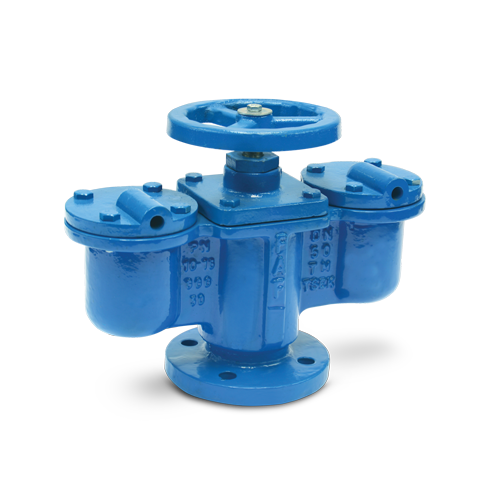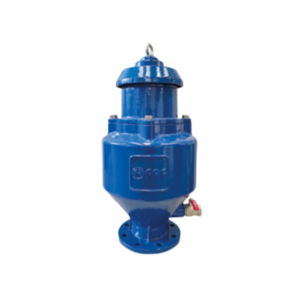7320 / DOUBLE ORIFICE ARV
| PRODUCTION STANDARDS | |
| DN50 → DN200 PN 10-16 |
|
| Design | EN 1074-4 |
| End Connection | EN 1092-2 / ISO 7005-2 |
| Marking | EN 190 |
| Tests | EN 12266 |
| Corrosion Protection |
Industrial Epoxy |
Features
- Ductile Iron Body, flanged connection according to EN 1092-2. Float part made of polyethylene which can be replaced easily.
- While emptying the line, if the air intake amount less than the water discharge amount, pipe will face the danger of vacuuming. Regardless of the pipe type, vacuum force will pull the pipe perimeter to the center, hence contractions and bendings occur on the pipe.
- Gasket fixings become loose and casues leakage after filling. Welding and connection areas will be under same danger.
- If the air is not discharged in water transmission and water network when on duty, air is collected in certain areas and may cause the danger of stopping the waterflow. This danger is increased with the congestion, and causing the pipeline to explode and major damages.
- Double Orifice ARV is installed on the pipe with a flange, releases the air recevied from its flange connnection through the orifices located above the float parts. When the air release is completed, the floats travel upside with the water force and closes the orifice outlet, thus preventing the leakage of water.
- The biggest problem of Double Orifice ARV’ is the ARV blockage. For this reason, ARV’s on the line must be checked at certain intervals.
- Body and cover of ductile iron with blue epoxy coating.
- Release valves can be manufactured with flanged or screwed ends.
- Depending on the capacity of the pipeline, single orifice or double orifice air release valve needs to be chosen.
- Working pressure range: 0.2 – 16 bar.
Temperature
- +130 °C
Scope of Application
- Pump suction lines
- Water lines
- Water supply network
- Line valves
- Venturimeters
- Plunger & turbine pumps







Reviews
There are no reviews yet.